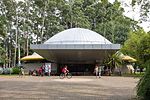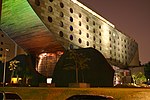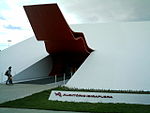Parque Ibirapuera Conservação
All Wikipedia neutral point of view disputesEnvironmental organisations based in BrazilNature conservation in BrazilNature conservation organizationsNon-profit organisations based in Brazil ... and 2 more
Public–private partnership projectsWikipedia neutral point of view disputes from October 2018
The Parque Ibirapuera Conservação (PIC) is a nonprofit organization that identifies, preserves and enhances the natural, historical and cultural assets of Ibirapuera Park in São Paulo, Brazil. It also assists other Brazilian local communities to care for their local urban parks. Until 2017, the organization provided nearly $1.5 million in aid to support Ibirapuera Park through restoration and volunteer work by its members and donors, contributions from Park-area residents, corporations and foundations.
Excerpt from the Wikipedia article Parque Ibirapuera Conservação (License: CC BY-SA 3.0, Authors).Parque Ibirapuera Conservação
Avenida República do Líbano, São Paulo Moema
Geographical coordinates (GPS) Address Nearby Places Show on map
Geographical coordinates (GPS)
| Latitude | Longitude |
|---|---|
| N -23.5831640883 ° | E -46.6631725698 ° |
Address
Avenida República do Líbano
Avenida República do Líbano
04502-000 São Paulo, Moema
São Paulo, Brazil
Open on Google Maps









